Column-I shows different charge distributions. Cloumn-II gives corresponding electric dipole moments.
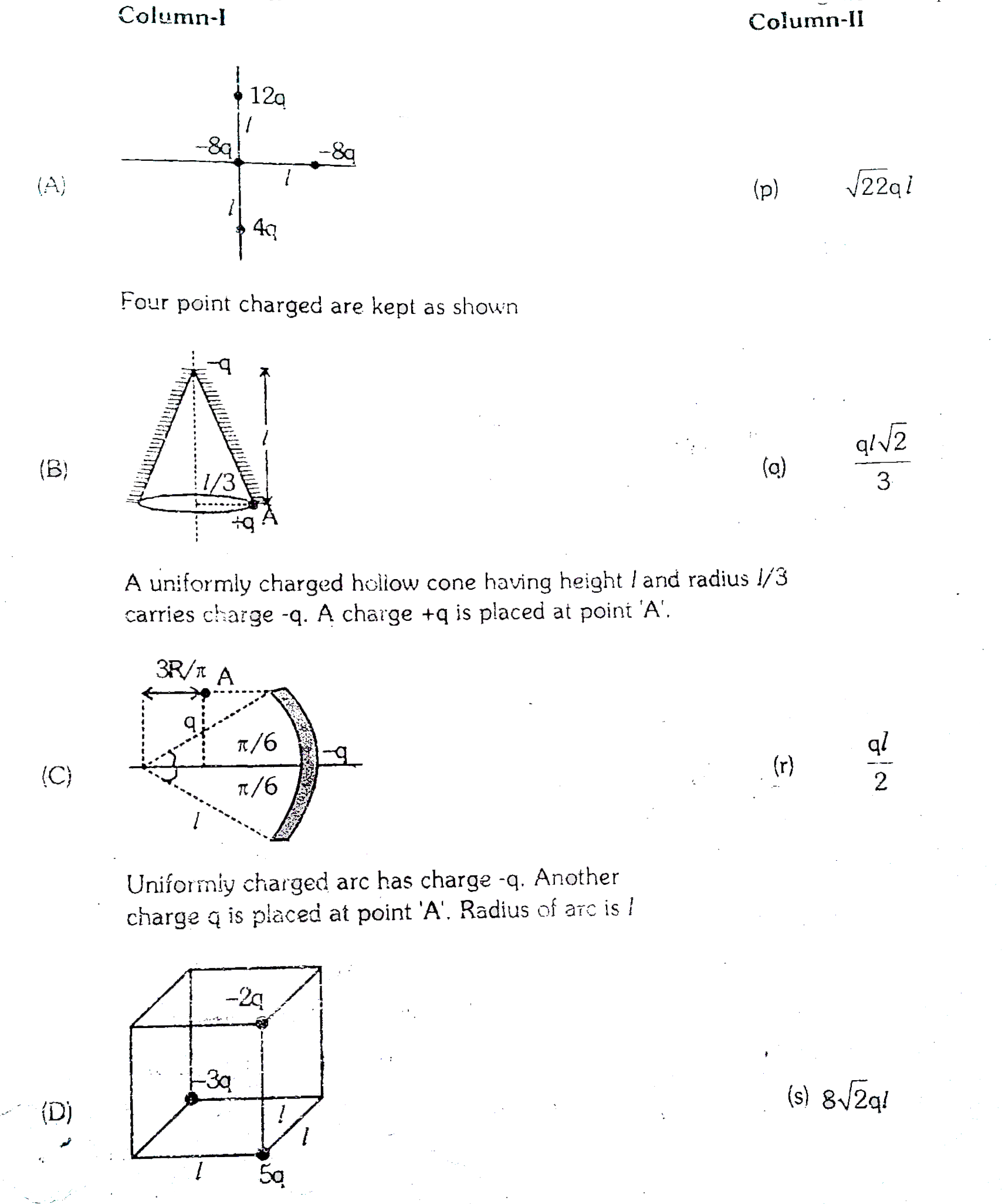
The correct Answer is:(A) s (B) q (C) r (D) p
The correct match is -
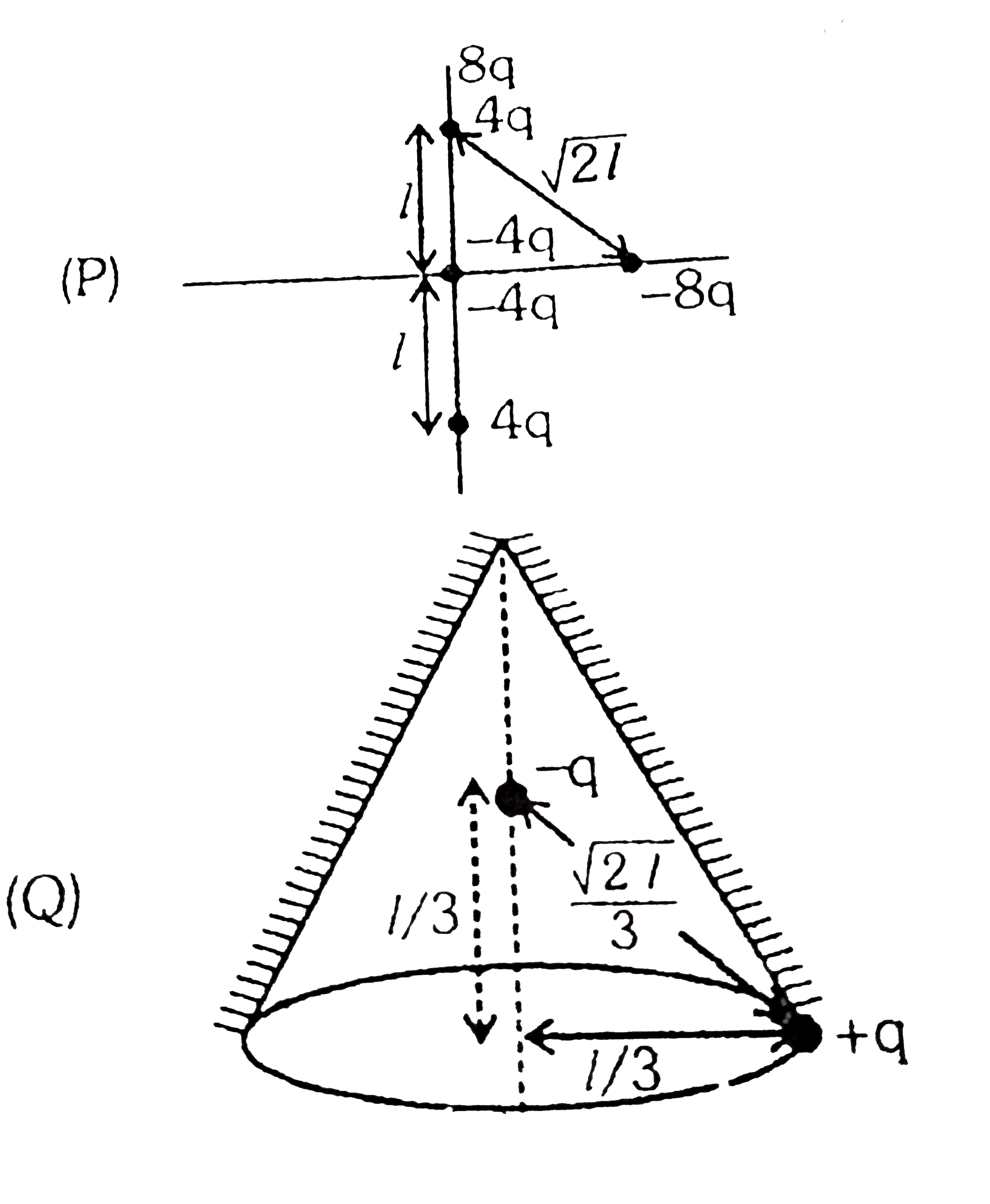
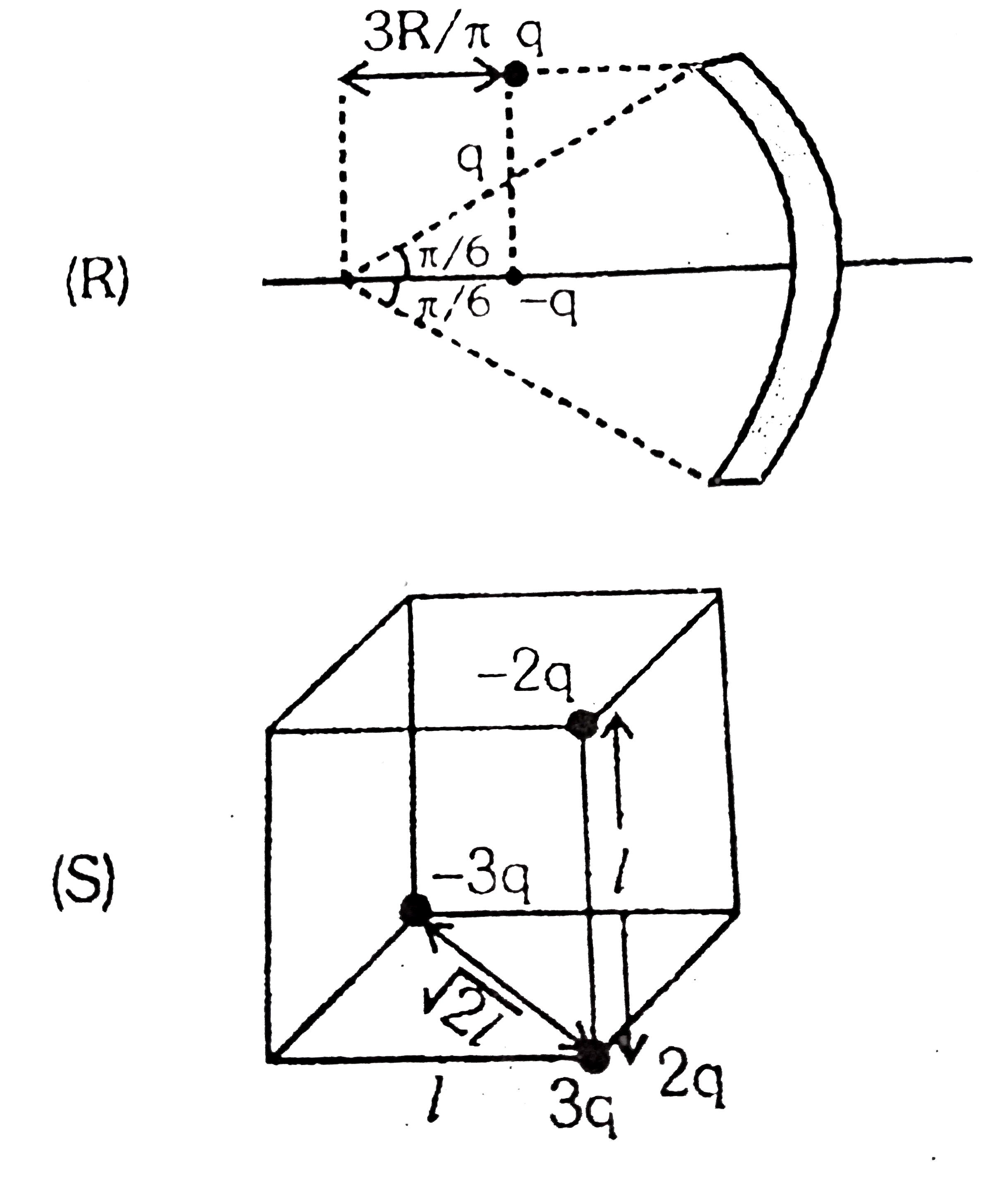
Topper's Solved these Questions
- MISCELLANEOUSBook:ALLENChapter:MISCELLANEOUSExercise:Comprehension 5
Explore 5 Videos
- MISCELLANEOUSBook:ALLENChapter:MISCELLANEOUSExercise:Comprehension 6
Explore 3 Videos
- MISCELLANEOUSBook:ALLENChapter:MISCELLANEOUSExercise:Exersice-06
Explore 1 Video
- KINEMATICS (MOTION ALONG A STRAIGHT LINE AND MOTION IN A PLANE)Book:ALLENChapter:KINEMATICS (MOTION ALONG A STRAIGHT LINE AND MOTION IN A PLANE)Exercise:BEGINNER S BOX-7
Explore 8 Videos
- PHYSICAL WORLD, UNITS AND DIMENSIONS & ERRORS IN MEASUREMENT Book:ALLENChapter:PHYSICAL WORLD, UNITS AND DIMENSIONS & ERRORS IN MEASUREMENT Exercise:EXERCISE-IV
Explore 8 Videos
Similar Questions
Column I shows different charge distributions and short electric dipole at a distance x from the charge distributions. Column II gives the dependence of force acting on the dipole as of function of x.

View SolutionColumn I shows charge distribution and column II shows electrostatic field created by that charge at a point r distance from its centre.
(,Column I ,,Column II),((A),A stationary point charge,(p),E∝r0),((B),A stationary uniformly long charge rod,(q),E∝r1),((C),A stationary electric dipole,(r),E∝r⋅−1),,(s),E∝r−2),(,,(t),E∝r−3):}
View Solution
Knowledge Check
The dipole moment of the given charge distribution is
 A−4RqπˆiB4RqπˆiC−2RqπˆiD2Rqπˆi
A−4RqπˆiB4RqπˆiC−2RqπˆiD2RqπˆiConsider the figure given below
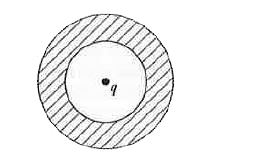
A charge Q is placed inside the Spherical conductor shell. In the given table, column 1 shows different charges, column 2 shows the positions of the electric charge and column 3 shows the different types of charge distribution.
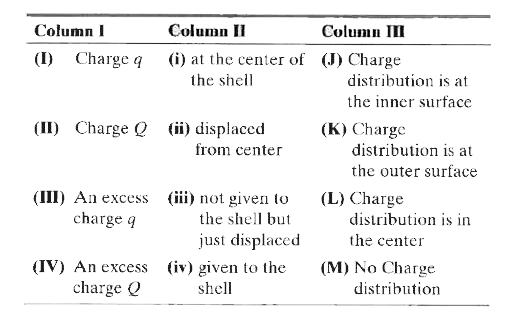
In which case will the Charge distribution be uniform ?A(III) (iv)(K)B(IV) (i)(M)C(III) (ii)(L)D(I) (i)(M)Consider the figure given below

A charge Q is placed inside the Spherical conductor shell. In the given table, column 1 shows different charges, column 2 shows the positions of the electric charge and column 3 shows the different types of charge distribution.

In which case will the charge distribution be non-uniform ?A(I) (i) (M)B(IV) (ii) (M)C(II) (ii) (J)D(I) (iv) (K)
Column I shows charge distribution and column II shows electrostatic field created by that charge at a point r distance from its centre.
(,Column I ,,Column II),((A),A stationary point charge,(p),E prop r^(0))),((B),A stationary uniformly long charge rod,(q),Eprop r^(1)),((C ),Astationarye≤ctricdipo≤,(r ),E∝r⋅−1),(s),E∝r−2),(,,(t),E∝r−3):}
View SolutionColumn-I shows some charge distributions and current distributions accompanied by their descriptions Column-II shows the instantaneous characteristic Here alpha symbolizes the system on which results are to be obtained.
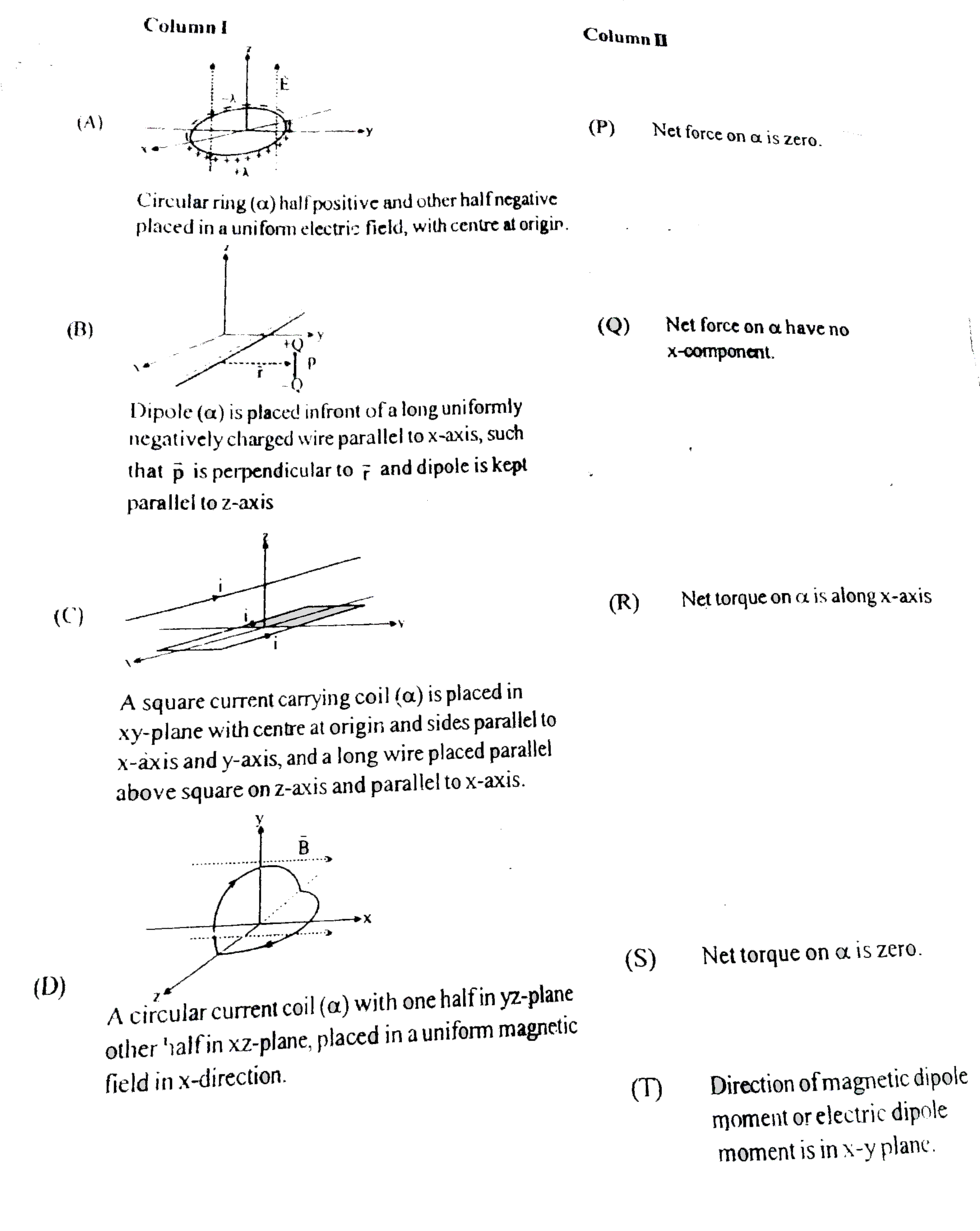
View SolutionAn electric dipole is the combination of two equal and opposite charges q and -q, respectively, separated by distance 2a. There are different points where we can find electric field due to the electric dipole. In the given table, column 1 shows different positions of point where we have to find electric field due to dipole, column 2 shows the figure of dipole with different positions of point where we have to find the electric field and column 3 shows the value or final formula of the electric field of different positions of the point.
When point P lies on the equatorial plan of the electric dipole, electric field due to -q is ?
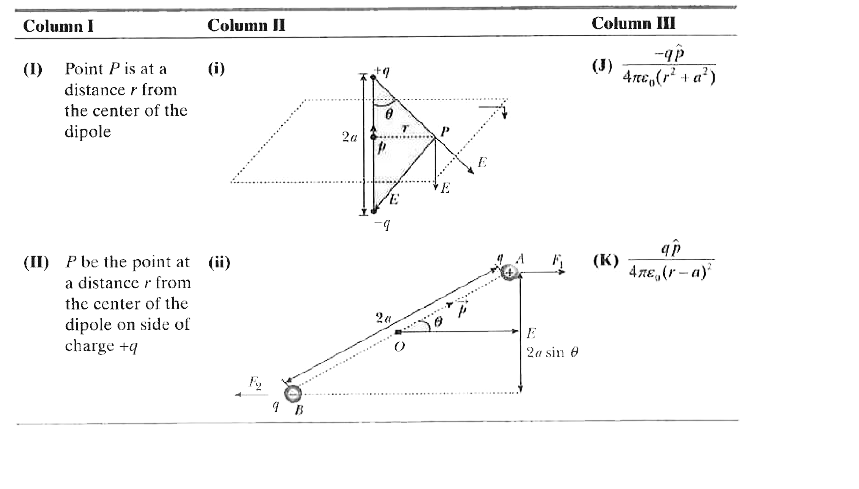

View SolutionAn electric dipole is the combination of two equal and opposite charges q and -q, respectively, separated by distance 2a. There are different points where we can find electric field due to the electric dipole. In the given table, column 1 shows different positions of point where we have to find electric field due to dipole, column 2 shows the figure of dipole with different positions of point where we have to find the electric field and column 3 shows the value or final formula of the electric field of different positions of the point.
when point P lies on the equatorial plane of the electric dipole, electric field due to +q is ?

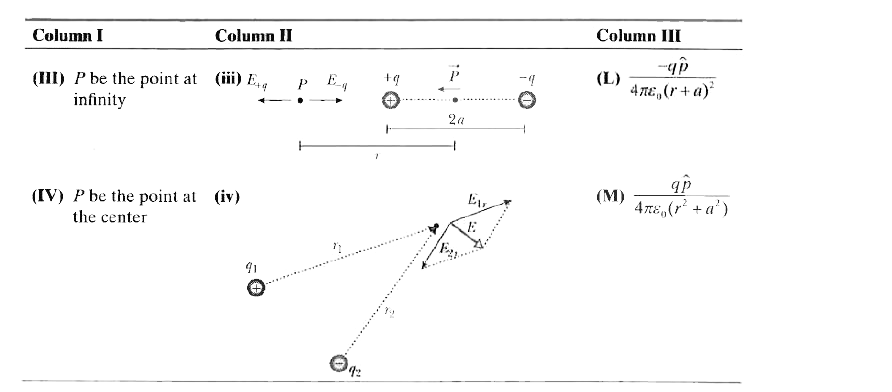
View SolutionAn electric dipole is the combination of two equal and opposite charges q and -q, respectively, separated by distance 2a. There are different points where we can find electric field due to the electric dipole. In the given table, column 1 shows different positions of point where we have to find electric field due to dipole, column 2 shows the figure of dipole with different positions of point where we have to find the electric field and column 3 shows the value or final formula of the electric field of different positions of the point.
When point P lies on the axis of the electric dipole, electric field due to -q is ?

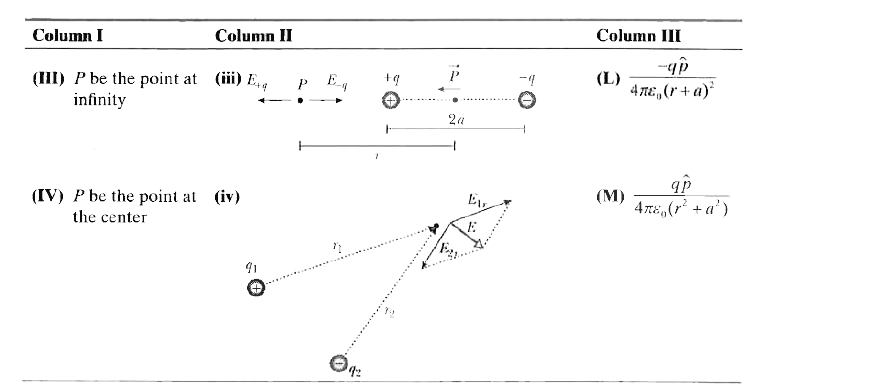
View Solution

